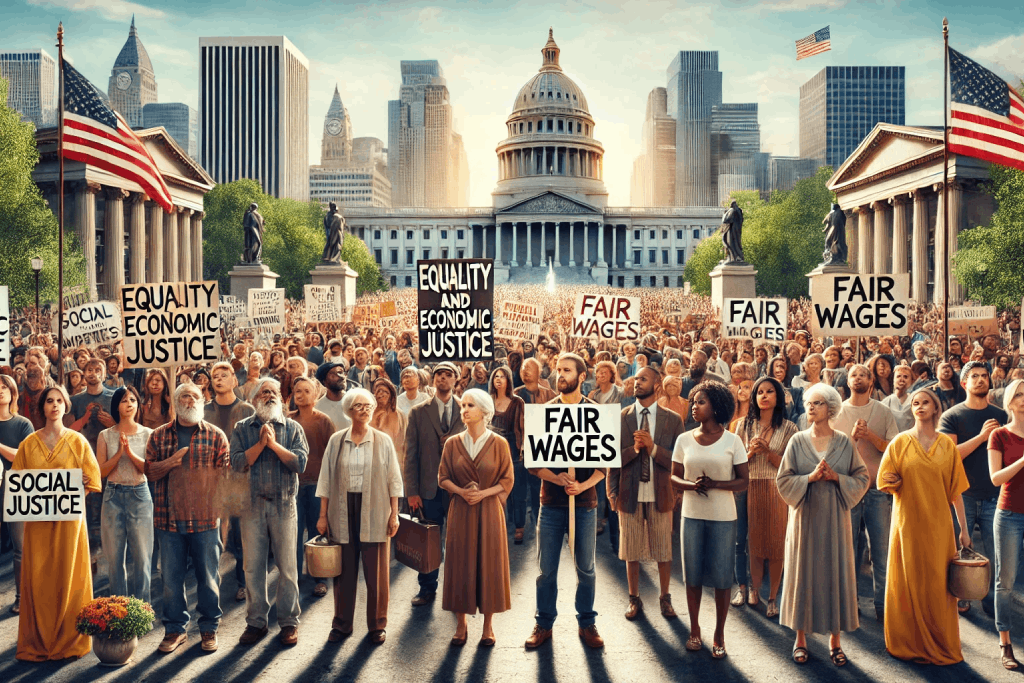John E. Jacob
Ensuring Social and Economic Justice in America
- Home
- >
- Ensuring Social and Economic Justice in America

Achieving social and economic justice for Black Americans requires addressing the lasting effects of slavery, segregation, and systemic racism. Reparations, in this context, must go beyond financial compensation and encompass a broader vision for healing and empowerment, one that redresses a deep, historical imbalance.
Former President Lyndon B. Johnson captured the essence of this issue in his final speech on civil rights in 1972, where he stated, “To be Black in White America is not to stand on level and equal ground. While the races may stand side by side, White stand on history mountain and Blacks stand in history’s hollow.” He argued that until the unequal history that has shaped Black Americans’ reality is acknowledged, true equality of opportunity cannot be achieved. This sentiment underscores the need to redefine what reparations should look like in America.
The traditional view of reparations often narrows the term to a financial handout, driven by a misguided sense of “White guilt” for past wrongs. However, this definition fails to grasp the larger issue: reparations are not merely about compensation but about addressing systemic wrongs whose effects reverberate throughout American society. Opponents of reparations often argue that the complexities of carrying out such a plan make it unfeasible. Yet, the idea of redress is not new, and in fact, it has been carried out successfully in other contexts.
One of the most instructive examples comes from the Marshall Plan, a U.S. initiative to rebuild Western Europe after World War II. This plan was a massive economic and infrastructural reconstruction effort aimed at restoring countries devastated by war. While this reconstruction helped Europe recover, it also served America’s economic and political interests, creating new markets for U.S. goods and services. The success of the Marshall Plan demonstrates that reparations—whether for nations or for marginalized groups—are not only a moral imperative but can also align with broader national interests.
Drawing parallels between the Marshall Plan and the reparations debate in America highlights an essential point: reparations for Black Americans could serve as a catalyst for broad economic and social renewal. Just as the Marshall Plan was a response to historical destruction, so too must reparations for Black Americans respond to the historical destruction caused by slavery, segregation, and systemic racism. This approach would invest not only in financial resources but also in rebuilding the social and economic infrastructure of Black communities, offering tangible solutions to the longstanding disparities that exist.
In considering reparations, it is important to think in terms of a “Marshall Plan for America.” This would involve a comprehensive, multi-faceted approach, targeting key areas like education, healthcare, housing, and job opportunities. The federal government, along with state and local governments, and the private sector, must all contribute to such an initiative to ensure that Black Americans are given the opportunities that have long been denied to them.
Additionally, recognizing the unequal history of Black Americans is vital in this conversation. Policies like the Homestead Acts of the 1860s and the post-World War II Federal Housing Act disproportionately benefited White Americans, facilitating their rise into the middle class, while Black Americans were systematically excluded. These policies are not only accepted but celebrated as successes in American history, despite their exclusionary nature. The same recognition and celebration must be extended to efforts aimed at redressing the historical wrongs faced by Black Americans.
The challenge, then, is not to frame reparations as a negative or divisive issue but to find the right approach and the right language for it. Instead of framing reparations as charity or guilt-driven handouts, we must see it for what it truly is: a necessary and long-overdue action to address centuries of harm and restore justice.
In conclusion, reparations must go beyond just financial compensation and must address the systemic inequality Black Americans have faced for centuries. By drawing lessons from the Marshall Plan and acknowledging the unequal history that has shaped the opportunities available to Black Americans, we can begin to chart a course toward true social and economic justice. Let’s look to history as a guide for how we can build a more just and equitable future for all Americans.
John E. Jacob
A former President and CEO of the National Urban League, committed to racial equality and leadership in both the public and private sectors.

